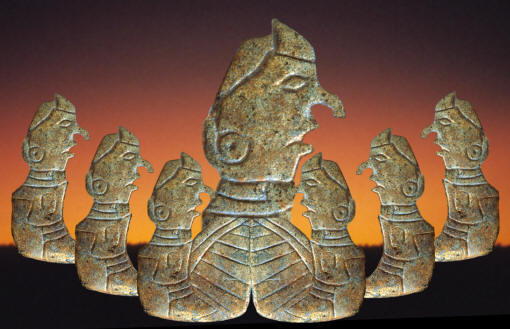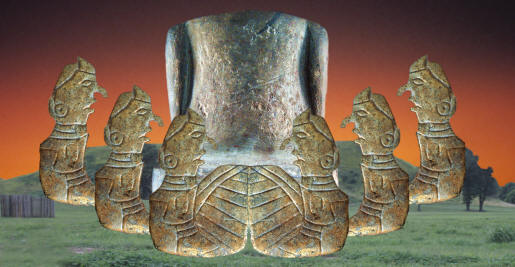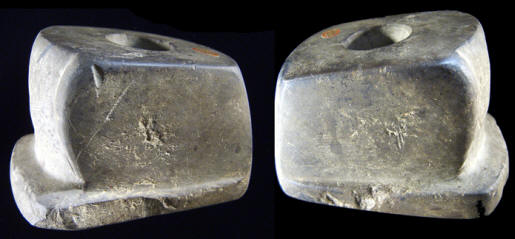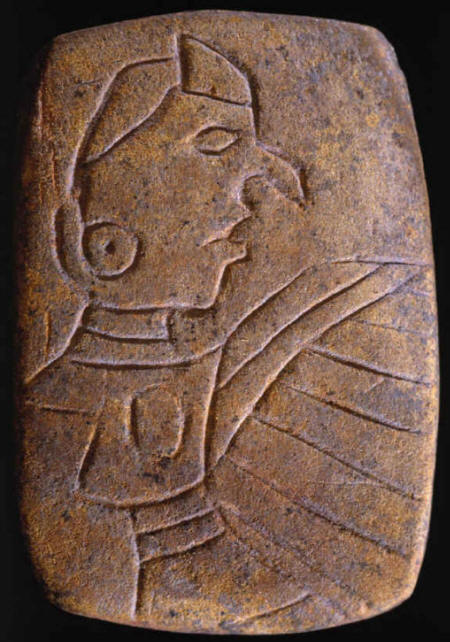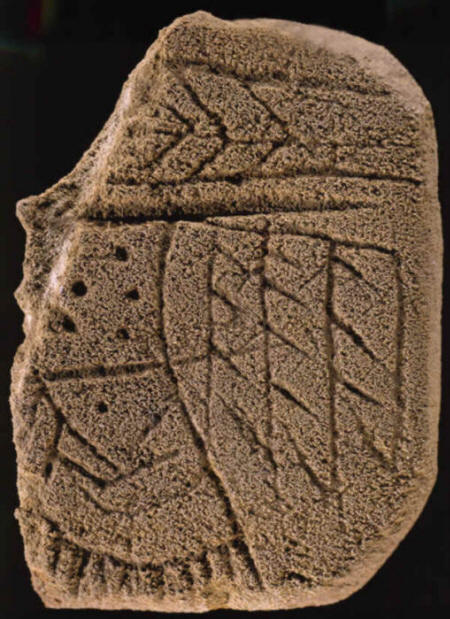|
||
|
||
|
"One aspect of
the Mississippian tradition was the development of an elaborate art
style, which probably was associated with, and symbolically expressed, a
complex religious and social system."---1982,
Thomas E. Emerson "Mississippian Stone Images In Illinois," p. 2.
Past studies of Cahokia style effigies have shown that the uniqueness of these artifacts are important. Each one is different and can provide more information towards the overall understanding of the Mississippian culture. Emerson writes that "Stone figures and effigy pipes carved in the Cahokia style represent some of the more striking artifacts associated with the Mississippian cultural tradition. Such objects are justly prized for their intrinsic beauty and craftsmanship as well as for the insights they provide into aspects of Mississippian culture, ritual and symbolism." The Franke pipe (pronounced Frank-ee) is another one of these stone figures that can add to the ever expanding knowledge of Cahokia iconography and mythology. |
||
|
The Franke pipe was once owned by Marvin Franke, of southern Illinois. Most of his collection was assembled many years earlier by his dad Harry. The Franke pipe is a Mississippian culture pipe that relates in style to pipes that have been found within the Cahokia Mounds area. The holes are large and conical in shape, the image is resting on a platform and the outline of the pipe is rectangular. |
||
|
||
|
The Franke pipe is heavily patinated and is made of high quality fine-grained sandstone. It measures 4 ½ inches long, 2 ¾ inches wide and 2 ¾ inches high. |
||
|
||
|
The main design features of the Franke pipe are simple and abstract in form. The image of a bird is achieved without the use of a head, tail or legs. The central body of a bird is represented by two wings and a breast area. Pecking marks on the front may also represent breast feathers. The wing design is similar to another bird effigy pipe, from the “old time” Patrick collection, that was found many years ago near the Cahokia site in St. Clair County, Illinois. |
||
| CONTINUE ON TO PAGE TWO | ||
|
"REFERENCES"
1982, Emerson, Thomas E.,
"Mississippian Stone Images In Illinois," p. 2. |
||
